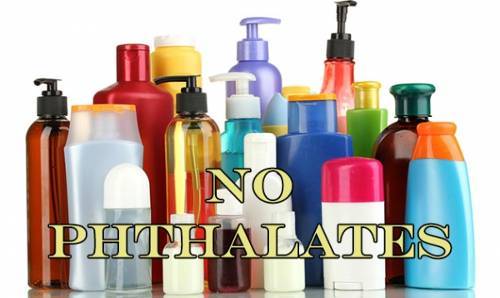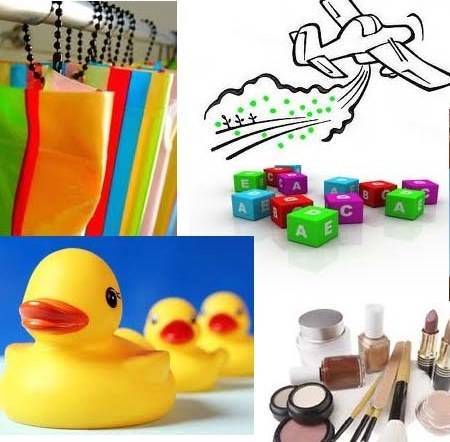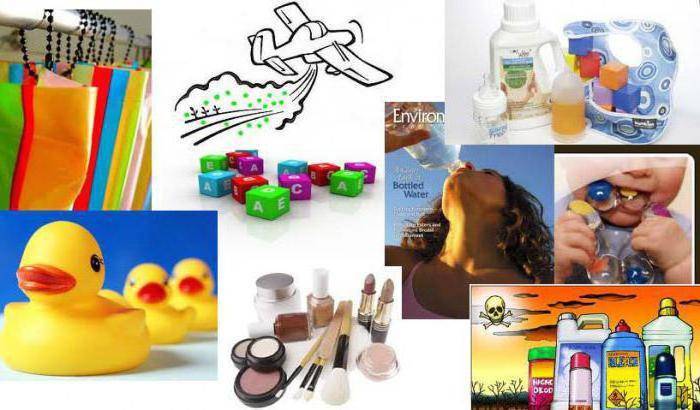Table of the most common phthalates
Market trend in decreasing use of low orthophthalates including DEHP
| Name | Abbreviation | Structural formula | Molecular weight (g/mol) | CAS No. |
|---|---|---|---|---|
| Dimethyl phthalate | DMP | C6H4(COOCH3)2 | 194.18 | 131-11-3 |
| Diethyl phthalate | DEP | C6H4(COOC2H5)2 | 222.24 | 84-66-2 |
| Diallyl phthalate | DAP | C6H4(COOCH2CH=CH2)2 | 246.26 | 131-17-9 |
| Di-n-propyl phthalate | DPP | C6H4[COO(CH2)2CH3]2 | 250.29 | 131-16-8 |
| Di-n-butyl phthalate | DBP | C6H4[COO(CH2)3CH3]2 | 278.34 | 84-74-2 |
| Diisobutyl phthalate | DIBP | C6H4[COOCH2CH(CH3)2]2 | 278.34 | 84-69-5 |
| Butyl cyclohexyl phthalate | BCP | CH3(CH2)3OOCC6H4COOC6H11 | 304.38 | 84-64-0 |
| Di-n-pentyl phthalate | DNPP | C6H4[COO(CH2)4CH3]2 | 306.40 | 131-18-0 |
| Dicyclohexyl phthalate | DCP | C6H4[COOC6H11]2 | 330.42 | 84-61-7 |
| Butyl benzyl phthalate | BBP | CH3(CH2)3OOCC6H4COOCH2C6H5 | 312.36 | 85-68-7 |
| Di-n-hexyl phthalate | DNHP | C6H4[COO(CH2)5CH3]2 | 334.45 | 84-75-3 |
| Diisohexyl phthalate | DIHxP | C6H4[COO(CH2)3CH(CH3)2]2 | 334.45 | 146-50-9 |
| Diisoheptyl phthalate | DIHpP | C6H4[COO(CH2)4CH(CH3)2]2 | 362.50 | 41451-28-9 |
| Butyl decyl phthalate | BDP | CH3(CH2)3OOCC6H4COO(CH2)9CH3 | 362.50 | 89-19-0 |
| Di(2-ethylhexyl) phthalate | DEHP, DOP | C6H4[COOCH2CH(C2H5)(CH2)3CH3]2 | 390.56 | 117-81-7 |
| Di(n-octyl) phthalate | DNOP | C6H4[COO(CH2)7CH3]2 | 390.56 | 117-84-0 |
| Diisooctyl phthalate | DIOP | C6H4[COO(CH2)5CH(CH3)2]2 | 390.56 | 27554-26-3 |
| n-Octyl n-decyl phthalate | ODP | CH3(CH2)7OOCC6H4COO(CH2)9CH3 | 418.61 | 119-07-3 |
| Diisononyl phthalate | DINP | C6H4[COO(CH2)6CH(CH3)2]2 | 418.61 | 28553-12-0 |
| Di(2-propylheptyl) phthalate | DPHP | C6H4[COOCH2CH(CH2CH2CH3)(CH2)4CH3]2 | 446.66 | 53306-54-0 |
| Diisodecyl phthalate | DIDP | C6H4[COO(CH2)7CH(CH3)2]2 | 446.66 | 26761-40-0 |
| Diundecyl phthalate | DUP | C6H4[COO(CH2)10CH3]2 | 474.72 | 3648-20-2 |
| Diisoundecyl phthalate | DIUP | C6H4[COO(CH2)8CH(CH3)2]2 | 474.72 | 85507-79-5 |
| Ditridecyl phthalate | DTDP | C6H4[COO(CH2)12CH3]2 | 530.82 | 119-06-2 |
| Diisotridecyl phthalate | DITP | C6H4[COO(CH2)10CH(CH3)2]2 | 530.82 | 68515-47-9 |
Table of the most common phthalates
| Name | Acronym | Structural formula | CAS No. |
|---|---|---|---|
| Dimethyl phthalate | DMP | C6H4(COOCH3)2 | 131-11-3 |
| Diethyl phthalate | DEP | C6H4(COOC2H5)2 | 84-66-2 |
| Diallyl phthalate | DAP | C6H4(COOCH2CH=CH2)2 | 131-17-9 |
| Di-n-propyl phthalate | DPP | C6H4[COO(CH2)2CH3]2 | 131-16-8 |
| Di-n-butyl phthalate | DBP | C6H4[COO(CH2)3CH3]2 | 84-74-2 |
| Diisobutyl phthalate | DIBP | C6H4[COOCH2CH(CH3)2]2 | 84-69-5 |
| Butyl cyclohexyl phthalate | BCP | CH3(CH2)3OOCC6H4COOC6H11 | 84-64-0 |
| Di-n-pentyl phthalate | DNPP | C6H4[COO(CH2)4CH3]2 | 131-18-0 |
| Dicyclohexyl phthalate | DCP | C6H4[COOC6H11]2 | 84-61-7 |
| Butyl benzyl phthalate | BBP | CH3(CH2)3OOCC6H4COOCH2C6H5 | 85-68-7 |
| Di-n-hexyl phthalate | DNHP | C6H4[COO(CH2)5CH3]2 | 84-75-3 |
| Diisohexyl phthalate | DIHxP | C6H4[COO(CH2)3CH(CH3)2]2 | 146-50-9 |
| Diisoheptyl phthalate | DIHpP | C6H4[COO(CH2)4CH(CH3)2]2 | 41451-28-9 |
| Butyl decyl phthalate | BDP | CH3(CH2)3OOCC6H4COO(CH2)9CH3 | 89-19-0 |
| Di(2-ethylhexyl) phthalate | DEHP, DOP | C6H4[COOCH2CH(C2H5)(CH2)3CH3]2 | 117-81-7 |
| Di(n-octyl) phthalate | DNOP | C6H4[COO(CH2)7CH3]2 | 117-84-0 |
| Diisooctyl phthalate | DIOP | C6H4[COO(CH2)5CH(CH3)2]2 | 27554-26-3 |
| n-Octyl n-decyl phthalate | ODP | CH3(CH2)7OOCC6H4COO(CH2)9CH3 | 119-07-3 |
| Diisononyl phthalate | DINP | C6H4[COO(CH2)6CH(CH3)2]2 | 28553-12-0 |
| Diisodecyl phthalate | DIDP | C6H4[COO(CH2)7CH(CH3)2]2 | 26761-40-0 |
| Diundecyl phthalate | DUP | C6H4[COO(CH2)10CH3]2 | 3648-20-2 |
| Diisoundecyl phthalate | DIUP | C6H4[COO(CH2)8CH(CH3)2]2 | 85507-79-5 |
| Ditridecyl phthalate | DTDP | C6H4[COO(CH2)12CH3]2 | 119-06-2 |
| Diisotridecyl phthalate | DIUP | C6H4[COO(CH2)10CH(CH3)2]2 | 68515-47-9 |
Properties
Phthalate esters are the dialkyl or alkyl aryl esters of phthalic acid (also called 1,2-benzenedicarboxylic acid, not be confused with the terephthalic or isophthalic acids ); the name «phthalate» derives from phthalic acid, which itself is derived from the word «naphthalene». When added to plastics, phthalates allow the long polyvinyl molecules to slide against one another. The phthalates have a clear syrupy liquid consistency and show low water solubility, high oil solubility, and low volatility. The polar carboxyl group contributes little to the physical properties of the phthalates, except when R and R’ are very small (such as ethyl or methyl groups). Phthalates are colorless, odorless liquids produced by reacting phthalic anhydride with an appropriate alcohol (usually 6- to 13-carbon).
The mechanism by which phthalates and related compounds effect plasticization to polar polymers has been a subject of intense study since the 1960s. The mechanism is one of polar interactions between the polar centres of the phthalate molecule (the C=O functionality) and the positively charged areas of the vinyl chain, typically residing on the carbon atom of the carbon-chlorine bond. For this to be established, the polymer must be heated in the presence of the plasticizer, first above the Tg of the polymer and then into a melt state. This enables an intimate mix of polymer and plasticizer to be formed, and for these interactions to occur. When cooled, these interactions remain and the network of PVC chains cannot reform (as is present in unplasticized PVC, or PVC-U). The alkyl chains of the phthalate then screen the PVC chains from each other as well. They are blended within the plastic article as a result of the manufacturing process.
Because they are not chemically bonded to the host plastics, phthalates are released from the plastic article by relatively gentle means. For example, they can be removed by heating or by extraction with organic solvents.
Alternatives
There are numerous biological alternatives on the market. The problem is that they are typically expensive and not compatible as a primary plasticizer. However, Dioctyl terephthalate (a terephthalate isomeric with DEHP) and 1,2-Cyclohexane dicarboxylic acid diisononyl ester (a hydrogenated version of DINP) are available at cost-competitive pricing and with good plasticization properties.
A plasticizer based on vegetable oil that uses single reactor synthesis and is compatible as a primary plasticizer has been developed. It is a ready substitute for dioctyl phthalate. And several other bio-based plasticizers have been and are being developed as alternatives to phthalates.
Uses
Phthalates are used in a large variety of products, from enteric coatings of pharmaceutical pills and nutritional supplements to viscosity control agents, gelling agents, film formers, stabilizers, dispersants, lubricants, binders, emulsifying agents, and suspending agents. End applications include adhesives and glues, agricultural adjuvants, building materials, personal care products, medical devices, detergents and surfactants, packaging, children’s toys, modelling clay, waxes, paints, printing inks and coatings, pharmaceuticals, food products, and textiles. Phthalates are also frequently used in soft plastic fishing lures, caulk, paint pigments, and sex toys made of so-called «jelly rubber.» Phthalates are used in a variety of household applications such as shower curtains, vinyl upholstery, adhesives, floor tiles, food containers and wrappers, and cleaning materials. Personal care items containing phthalates include perfume, eye shadow, moisturizer, nail polish, liquid soap, and hair spray. They are also found in modern electronics and medical applications such as catheters and blood transfusion devices. The most widely-used phthalates are the di-2-ethyl hexyl phthalate (DEHP), the diisodecyl phthalate (DIDP) and the diisononyl phthalate (DINP). DEHP is the dominant plasticizer used in PVC due to its low cost. Benzylbutylphthalate (BBP) is used in the manufacture of foamed PVC, which is mostly used as a flooring material. Phthalates with small R and R’ groups are used as solvents in perfumes and pesticides.
As of 2004 manufacturers produced about 363 thousand metric tonnes (800 million pounds or 400 000 short tons) of phthalates each year. They contribute 10-60% of plastic products by weight.
Exposure
Due to their use as plasticizers, diethyl phthalates are ubiquitous in the environment, especially near places of production and use. Biodegradation through microbially-mediated processes can result in products that can potentially harm microorganisms.
There is also general evidence of widespread human exposure.
Non-occupational exposure results from the diet, for example phthalate-coated medicines and nutritional supplements, and through consumer products. High occupational exposure was observed in workers directly manufacturing plasticizers.
Studies suggest a high correlation between air and urine sample concentrations of short side-chain phthalates such as DEP, making inhalation an important route of exposure.
Biodegradation
Biodegradation by microorganisms
Biodegradation of DEP in soil occurs by sequential hydrolysis of the two diethyl chains of the phthalate to produce monoethyl phthalate, followed by phthalic acid. This reaction occurs very slowly in an abiotic environment. Thus there exists an alternative pathway of biodegradation which includes transesterification or demethylation by microorganisms, if the soil is also contaminated with methanol, that would produce another three intermediate compounds, ethyl methyl phthalate, dimethyl phthalate and monomethyl phthalate. This biodegradation has been observed in several soil bacteria. Some bacteria with these abilities have specific enzymes involved in the degradation of phthalic acid esters such as phthalate oxygenase, phthalate dioxygenase, phthalate dehydrogenase and phthalate decarboxylase.
The developed intermediates of the transesterification or demethylation, ethyl methyl phthalate and dimethyl phthalate, enhance the toxic effect and are able to disrupt the membrane of microorganisms.
Biodegradation by mammals
Recent studies show that DEP, a phthalic acid ester (PAE), is enzymatically hydrolyzed to its monoesters by pancreatic cholesterol esterase (CEase) in pigs and cows. These mammalian pancreatic CEases have been found to be nonspecific for degradation in relation to the diversity of the alkyl side chains of PAEs. .
Metabolism
Diethyl phthalate is hydrolyzed to monoester, monoethyl phthalate and ethanol after oral administration in the lumen of the gastrointestinal tract or in the intestinal mucosal cells. Hydrolysis of DEP also takes place at the kidney and liver after systemic absorption. After tissue distribution throughout the body, DEP accumulates in the liver and kidney. The metabolites are excreted in the urine. DEP is metabolized by carboxyl esterase, which is synthesized in the human liver. In vitro studies show that DEP reduces the glucuronyl transferase activity. It was also observed that the activity of peroxisomal enzyme carnitine acetyl transferase is increased in cultures of rat liver cells. Furthermore, DEP induces the enzyme activity of catalase, which leads to hepatic peroxisome proliferation and possibly causes hyperplasia.
Properties
Phthalate esters are the dialkyl or alkyl aryl esters of phthalic acid (also called 1,2-benzenedicarboxylic acid, not be confused with the isomeric terephthalic or isophthalic acids ); the name phthalate derives from phthalic acid, which itself is derived from word «naphthalene». When added to plastics, phthalates allow the long polyvinyl molecules to slide against one another. The phthalates have a clear syrupy liquid consistency and show low water solubility, high oil solubility, and low volatility. The polar carboxyl group contributes little to the physical properties of the phthalates, except when R and R’ are very small (such as ethyl or methyl groups). They are colorless, odorless liquids produced by reacting phthalic anhydride with an appropriate alcohol (usually 6 to 13 carbon).
20 Ноя Что такое фталаты и в чем их вред
Posted at 10:13h
in Без рубрики
by
Что такое фталаты? В чем их вред? – часто спрашивают меня подписчики. Сейчас в Школе Экологичного Материнства проходили тему содержания фталатов в детских игрушках, одежде, обуви, других товарах. И я решила добавить в урок побольше ссылок на исследования и статьи по этой теме – в дополнение к моей базе. Ох… Опять расстроилась и поняла, что не могу не поделиться со всеми:


“Многие слышали, что фталаты представляют опасность для здоровья. Однако не все понимают, что такое фталаты и в каких привычных нам товарах и средствах они встречаются повсеместно.
Фталаты представляют собой эфиры фталевой кислоты. Благодаря ряду своих отличительных свойств их принято называть дешевыми пластификаторами, которые применяются при создании большей части ПВХ-изделий. Также они являются главными действующими компонентами всевозможных красок и резины. Нашли свое применение фталаты в косметике. Там их ценят за способность придавать мягкость продукту, а также из-за специфичной масляной пленки. Иногда вещество задействуется в качестве растворителя, либо связующей составляющей. Очень распространены в составе духов, лаков для ногтей и волос.
Существуют разные подвиды фталатов:
- Диэтилфталат
- Ди (н-бутил) фталат
- Ди (2-этилгексил) фталат
- Диметилфталат
- Дибутилфталат»
В составах они, в основном, обозначены как DEA и DETA (можно и по-русски ДЭА, ДЭТА).
⠀
️Только вотчто важно! Часто в составах они не указаны! Многие производители просто ограничиваются общим термином – ароматизатор или отдушка. Или не указываются от слова «совсем»: помните, я рассказывала про исследование Гринписа, проводимое среди пластиковых игрушек? (http://fairtoys.org) Превышение ПДК фталатов было найдено даже в игрушке, где на упаковке стояла надпись «Не содержит фталаты»!. Читаем далее:
Читаем далее:
«В настоящее время официально эта группа веществ считается слаботоксичной. То есть если производитель придерживается рекомендованных доз в своей продукции, то «особой опасности она не несет». Но уже не раз я видела исследования, подтверждающие недобросовестность производителей. НУ КАК можно добавить в игрушку фталатов в 200 РАЗ (!!!) больше нормы?! (Цифра из того же отчета Гринписа).
«Главной проблемой, которую создают фталаты, считается их способность накапливаться в организме. Таким образом, происходит постепенное хроническое отравление.
Впервые о проблеме фталатов заговорили относительно недавно – только в 2003 году. Американские исследователи забили тревогу, предоставив широкой общественности результаты своих многочисленных экспериментов. Они свидетельствовали о том, что фталаты способны быстро высвобождаться из различных пластиковых изделий. Объясняется это тем, что вещества химически не связаны с ПВХ-основой. Кроме того, они способны накапливаться в воздухе. Помимо ингаляционного формата попадания в организм, человек может получить опасную дозу фталатов и:
- через питьевую воду;
- посредством продуктов питания;
- при длительном соприкосновении с кожным покровом.
⠀
Попав в организм, фталат постепенно превращает в метаболиты. В этом виде он отправляется разрушать органы и ткани и вызывать:
⠀
онкологию груди
поликистоз яичников
астму среди детей при повышенном содержании фталатов в воздухе
бесплодие у обоих полов
снижение выработки гормона тестостерона
абдоминальное ожирение, свойственное мужчинам
риски развития диабета и рака яичка
нарушение полового созревания».
Вы не обращали внимание на данные, что именно количество вышеперечисленных болезней феноменально возросло в последние 20 лет?
«Также специалисты из Южной Кореи установили, что повышенное содержание фталатов в моче тесно связано с синдромом дефицита внимания и гиперактивностью у малышей. В группу риска попали дети в возрасте до трех лет, так как именно в этот период они наиболее восприимчивы к фталатам».
Вообще ужастики – мой самый нелюбимый жанр! И я не хочу запугивать. Просто считаю, что мы все должны быть в курсе того, что происходит вокруг. Знать, что такое фталаты, и в чем их вред. И быть осторожными в своем потребительстве:
⠀
Всегда отдавать предпочтение натуральным товарам (косметика, еда, предметы обихода, игрушки, мебель и т.д.) – в них, как правило, фталатов нет.
⠀
Читать составы (думаю, в 50% случаев это поможет)
⠀
Ещё больше лайфхаков и советов я даю в Школе Экологичной Жизни и Материнства. Скоро будет новый поток – записывайтесь уже сейчас. Подробности здесь: https://myecoblog.ru/shkola-ekologichnogo-materinstva
⠀
Использованы выдержки из статьи http://medtox.net/toksiny-yady-alkaloidy/kak-ftalaty-vliyayut-na-organizm-cheloveka
⠀
⠀
⠀
Запрещены в ЕС, но не в США
В то время как в Соединенных Штатах, а именно в штате Калифорния, использование фталатов в производстве детских игрушек запрещено с 2009 года.

Закон запрещает производство, продажу и распространение игрушек и средств детской гигиены с содержанием фталатов для детей в возрасте до 3 лет. Однако активистов движения за права потребителей не проведешь:
Некоторые известные косметические бренды, включая Body Shop и Aveda – входящие в состав косметической империи Estee Lauder, а также Urban Decay – подразделение холдинга Moet Hennesy Louis Vuitton (LVMH), уже заявили о своем добровольном желании устранить фталаты из всех своих продуктов.
Однако большинство компаний, базирующихся в Соединенных Штатах, пытаются препятствовать возможному запрету на фталаты.

Ассоциация производителей косметики, средств гигиены и парфюмерии (СТFА) считает европейский запрет «необязательным», игнорируя результаты исследований фталатов.
«Мы сталкиваемся с усилением нормативно-правового давления со стороны Европейского Союза, что сказывается на нашей индустрии в глобальном масштабе, в частности, в Китае», — отметил Марк Притчард, глава совета директоров СТFА и департамента международной торговли косметикой и красками для волос компании Procter and Gamble, в ежегодном отчете 2005 г.
Сегодня лаки для ногтей, производимые фирмами Revlon, Max Factor (бренд Procter and Gamble) и COVER GIRL, а также Clinique (бренд Estee Lauder) и МАС, не содержат фталатов. И это очень радует.
Косметические компании в Соединенных Штатах не обязаны по закону указывать фталаты, а также многие другие химические соединения на этикетках своих продуктов, и сотни популярнейших косметических средств, включая тональные основы, румяна, лаки для волос, несмываемые кондиционеры для волос, парфюмерию, детские шампуни и лосьоны, а также самые продаваемые MP3-все еще содержат опаснейшие фталаты.
Редакция рекомендует:
Смотри также:
Пропиленгликоль в косметике — А вы умываетесь антифризом?
Знаете, что объединяет влажные салфетки для малышей и авиационный антифриз? И там и там основным компонентом являются пропиленгликоль. В чем его же вред и отличие от бутитиленгликоля
Шампуни без sodium laureth sulfate
А вы уже знаете чем вредны сульфаты, такие как sodium laureth sulfate в шампунях? В этой статье я составила рейтинг лучших шампуней без sls и парабенов.
Химия в косметике — ядовитая десятка
Чем опасна химия в косметике? Какие самые опасные и вредные вещества могут содержаться в косметических средствах? Читайте эту статью и узнаете!
Вредна ли просроченная косметика?
Знаете ли вы насколько вредна просроченная косметика? В этой статье я расскажу, как определить срок годности косметики, а также поделюсь некоторыми идеями для хранения косметики.
Парабены в косметике
Что такое парабены? Какая лучшая натуральная косметика без парабенов? О том, чем опасны эти консерванты и об их природных альтернативах читайте в этой статье.
Где можно найти фталаты
Фталаты (phthalate) являются широко востребованными в промышленности соединениями и известны как диалкиловые либо алкилариловые эфиры 1,2-бензолдикарбоновой кислоты.

Фталаты окружают нас повсюду. Их используют при производстве: штор для ванной, резиновых уточек, одежды и других предметов из ПВХ, секс-игрушек, ароматизаторов, МРЗ-плееров (включая наушники и шнуры), парфюмерных изделий, лаков для волос и ногтей.
У большинства американцев, проходящих обследование в центрах контроля и профилактики заболеваний, в моче постоянно обнаруживают метаболиты множества фталатов.
Identification in plastics
Some type 3 plastics may leach phthalates.[citation needed]
Phthalates are used in some but not all PVC formulations, and there are no specific labeling requirements for phthalates. PVC plastics are typically used for various containers and hard packaging, medical tubing, and bags, and are labelled «Type 3» for recycling reasons. However, the presence of phthalates rather than other plasticizers is not marked on PVC items. Only unplasticized PVC (uPVC), which is mainly used as a hard construction material, has no plasticizers. If a more accurate test is needed, chemical analysis, for example by gas chromatography or liquid chromatography, can establish the presence of phthalates.
Polyethylene terephthalate (PET, PETE, Terylene, Dacron) is the main substance used to package bottled water and many sodas. Products containing PETE are labeled «Type 1» (with a «1» in the recycle triangle) for recycling purposes. Although the word «phthalate» appears in the name, PETE does not use phthalates as plasticizers. The terephthalate polymer PETE and the phthalate ester plasticizers are chemically different substances. Despite this, however, a number of studies have found phthalates such as DEHP in bottled water and soda. One hypothesis is that these may have been introduced during plastics recycling.
Опасность фталатов для детей
Многие средства для ухода за малышами – лосьоны, присыпки и шампуни – содержат высокие дозы фталатов, они же просачиваются из игрушек, ложек и погремушек, имеющих в составе ПВХ.

Авторы исследования «заметили, что применение лосьонов, присыпок и шампуней для младенцев соотносится с повышением концентрации в моче младенцев продуктов переработки (метаболитов) фталатов, и эта закономерность наиболее очевидна у самых маленьких».
Учитывая эти сведения, можно предположить, что кожный контакт младенцев с фталатами способен существенно увеличить совокупное содержание этих веществ в организме для данного поколения.
Identification in plastics
Some type 3 plastics may leach phthalates.
Phthalates are used in some but not all PVC formulations, and there are no labeling requirements for phthalates specifically. PVC plastics are typically used for various containers and hard packaging, medical tubing and bags, and are labelled «Type 3» for recycling reasons. However, the presence of phthalates rather than other plasticizers is not marked on PVC items. Plasticizers such as phthalates are only used for making flexible PVC, so it stands to reason that they should only be present in soft forms of PVC. If a more accurate test is needed, chemical analysis, for example by gas chromatography, can establish the presence of phthalates.
Legal status
Canada
In 1994, a Health Canada assessment found that DEHP and another phthalate product, B79P, were harmful to human health. The Canadian federal government responded by banning their use in cosmetics and restricting their use in other applications.
A more recent assessment in 2017 found that B79P and DEHP may cause environmental damage. As of 2019, regulations to protect the environment against DEHP and B79P have not yet been put into place.
European Union
Update on Non-Classified plasticisers and the European REACH Candidate Classification including pending authorisation
The use of some phthalates has been restricted in the European Union for use in children’s toys since 1999. DEHP, BBP, and DBP are restricted for all toys; DINP, DIDP, and DNOP are restricted only in toys that can be taken into the mouth. The restriction states that the amount of these phthalates may not be greater than 0.1% mass percent of the plasticized part of the toy.
Generally the high molecular weight phthalates DINP, DIDP and DPHP have been registered under REACH and have demonstrated their safety for use in current applications. They are not classified for any health or environmental effects.
The low molecular weight products BBP, DEHP, DIBP, and DBP were added to the Candidate list of Substances for Authorisation under REACH in 2008-9, and added to the Authorisation list, Annex XIV, in 2012. This means that from February 2015 they are not allowed to be produced in the EU unless authorisation has been granted for a specific use, however they may still be imported in consumer products. The creation of an Annex XV dossier, which could ban the import of products containing these chemicals, is being jointly prepared by the ECHA and Danish authorities and is expected to be submitted by April 2016.
The Dutch office of Greenpeace UK sought to encourage the European Union to ban sex toys that contained phthalates.
United States
During August 2008, the United States Congress passed and President George W. Bush signed the Consumer Product Safety Improvement Act (CPSIA), which became public law 110-314. Section 108 of that law specified that as of February 10, 2009, «it shall be unlawful for any person to manufacture for sale, offer for sale, distribute in commerce, or import into the United States any children’s toy or child care article that contains concentrations of more than 0.1 percent of» DEHP, DBP, or BBP and «it shall be unlawful for any person to manufacture for sale, offer for sale, distribute in commerce, or import into the United States any children’s toy that can be placed in a child’s mouth or child care article that contains concentrations of more than 0.1 percent of» DINP, DIDP, DnOP. Furthermore, the law requires the establishment of a permanent review board to determine the safety of other phthalates. Prior to this legislation, the Consumer Product Safety Commission had determined that voluntary withdrawals of DEHP and DINP from teethers, pacifiers, and rattles had eliminated the risk to children, and advised against enacting a phthalate ban.
In another development in 1986, California voters approved an initiative to address their growing concerns about exposure to toxic chemicals. That initiative became the Safe Drinking Water and Toxic Enforcement Act of 1986, better known by its original name of Proposition 65. In December 2013 DINP was listed as a chemical «known to the State of California to cause cancer» This means that, starting December 2014, companies with 10 or more employees manufacturing, distributing or selling the product(s) containing diisononyl phthalate (DINP) are required to provide a clear and reasonable warning for that product. The California Office of Environmental Health Hazard Assessment, charged with maintaining the Proposition 65 list and enforcing its provisions, has implemented a «No Significant Risk Level» of 146 ug/day for DINP, as of 1 April 2016.
Structure and reactivity
Diethyl phthalate, or o-Benzenedicarboxylic acid diethyl ester consists of a benzene ring with two carboxylic acid ethyl esters attached to it in the ortho (1,2) pattern. It is a highly conjugated system, as the pi-cloud on the benzene ring, the p-orbitals on the carbonyl atoms and the lone pairs on the oxygens are all conjugated. The substituents are meta-directing, and they are ortho to each other, so all positions in the ring are more or less equally deactivated. Diethyl phthalate is likely to undergo biodegradation in the environment. Abiotic degradation processes such as hydrolysis, oxidation, and photolysis are unlikely to play significant roles in the environmental fate of diethyl phthalate.
Фталаты
Многие производители, в основной массе, ПВХ трубки эндотрахеальные и трахеостомические производят с ди(2-этилгексил)фталатом (ДЭГФ) наравне с другими пластификаторами (например, ди-изо-октил-адипатом).
Очень часто, в последнее время, потребителей волнует вопрос потенциальной токсичности фталатов для пациента. Поэтому начнём с «истории вопроса». История человечества напрямую связана с полимерами. Исстари с природными полимерами (клетчатка растений, древесная целлюлоза, шёлк и пр.), и более полутора столетий с синтетическими. Большая Фталатная Война началась в конце прошлого века в Дании и с небольшим запозданием в Нидерландах (Голландия) с детских игрушек и игрушек, направленных на сексуальное удовлетворение, медленно переползая в другие сферы деятельности человека и занимая умы и время учёных мужей на доказательства и опровержения. В медицинской практике промелькнуло несколько публикаций с сомнительной доказательной базой. Единственная вразумительная статья, которая доказывает «выветривание» ДЭГФ из медицинских трубок. В то же самое время биомедицинские исследования на животных показывали дозозависимые негативные последствия при пересчёте на массу взрослого человека – 500 грамм ДЭГФ/сутки, что просто нереально. Съедая по полкило пластмассы в день, даже «безопасной» без фталатов, легко можно добиться схожих эффектов. Поэтому мы смело можем сказать, что вопрос опасности – это в первую очередь вопрос концентрации.
В 2002 году ФДА США под давлением общественных организаций приняло регулярно корректируемый регламент для медицинских изделий, содержащих ДЭГФ. В последней редакции от июля 2009 года (ознакомиться здесь и здесь), главным выводом стало следующее: «Мы должны подчеркнуть, что риск от воздействия ДЭГФ намного меньше, чем риски, возникающие при отказе от жизнеспасающих процедур».
При этом список конкретных процедур, представляющих потенциально высокий риск химического заражения организма ДЭГФ, остался весьма ограниченным:- Переливание крови у новорожденных- Экстракорпоральная Мембранная Оксигенация (ЭМО) у новорожденных- Парентеральное питание новорожденных липидами из пакетов ПВХ- Несколько процедур новорожденным (высокий риск кумулятивного воздействия)- Гемодиализ в пубертатном возрасте мужчин- Гемодиализ у беременных или кормящих женщин- Энтеральное питание новорожденных и взрослых- Трансплантация сердца и коронарных артерий (общая доза)- Переливание крови- Переливание крови у взрослых в сочетании с ЭМО.
В отличие от этого, мало или вообще не сопряжено с риском, связанным с воздействием на пациента ДЭГФ, применение ПВХ пакетов для внутривенного вливания кристаллоидных жидкостей (например, физиологический раствор, раствор Рингера).
Кроме того, существует незначительный риск, связанный с высвобождением ДЭГФ из ПВХ-контейнеров для приготовления растворов, а также хранения и порционирования таблетированных фармацевтических средств.
А теперь оглядимся по сторонам. Какие фталаты осаждают нас в повседневном быту? Полиэтилен терефталат – МАТЕРИАЛ пластиковых бутылок питьевой воды, соков, молочных продуктов, безалкогольных и слабоалкогольных напитков.
Дибутилфталат – применяется в кожных кремах, полиролях мебели и пр.
Диметилфталат – смягчитель линолеумных напольных покрытий, жидких гвоздей (ставших столь популярными в последнее время), ПВХ в игрушках для детей и взрослых, в примесях дубильных веществ для выделки кожи.
Перфлюорокарбоксилаты – примесь в ламинированном покрытии внутренней поверхности пищевой упаковки (пакеты соков, молока, попкорна и пр.)
Вы всё ещё опасаетесь фталатов?..И тех ли фталатов Вы опасаетесь? Тогда посвятите денёк-другой рассмотрению проблемы в индивидуальном порядке. Все доводы «pro et contra» доступны в Интернете без ограничений.
Источник www.portexland.ru
Toxicity
Little is known about the chronic toxicity of diethyl phthalate, but existing information suggests only a low toxic potential. Studies suggest that some phthalates affect male reproductive development via inhibition of androgen biosynthesis. In rats, for instance, repeated administration of DEP results in loss of germ cell populations in the testis. However, diethyl phthalate doesn’t alter sexual differentiation in male rats. Dose response experiments in fiddler crabs have shown that seven-day exposure to diethyl phthalate at 50 mg/L significantly inhibited the activity of chitobiase in the epidermis and hepatopancreas. Chitobiase plays an important role in degradation of the old chitin exoskeleton during the pre-moult phase.
Teratogenicity
When pregnant rats were treated with diethyl phthalate, it became evident that certain doses caused skeletal malformations, whereas the untreated control group showed no resorptions. The amount of skeletal malformations was highest at highest dose. In a following study it was found that both phthalate diesters and their metabolic products were present in each of these compartments, suggesting that the toxicity in embryos and fetuses could be the result of a direct effect.
Future investigation
Some data suggest that exposure to multiple phthalates at low doses significantly increases the risk in a dose additive manner. Therefore, the risk from a mixture of phthalates or phthalates and other anti-androgens, may not be accurately assessed studying one chemical at a time. The same may be said about risks from several exposure routes together. Humans are exposed to phthalates by multiple exposure routes (predominantly dermal), while toxicological testing is done via oral exposure.
Список источников
- www.naturalrating.ru
- myecoblog.ru
- www.viroban.ru
- wiki2.org
- www.thefullwiki.org

